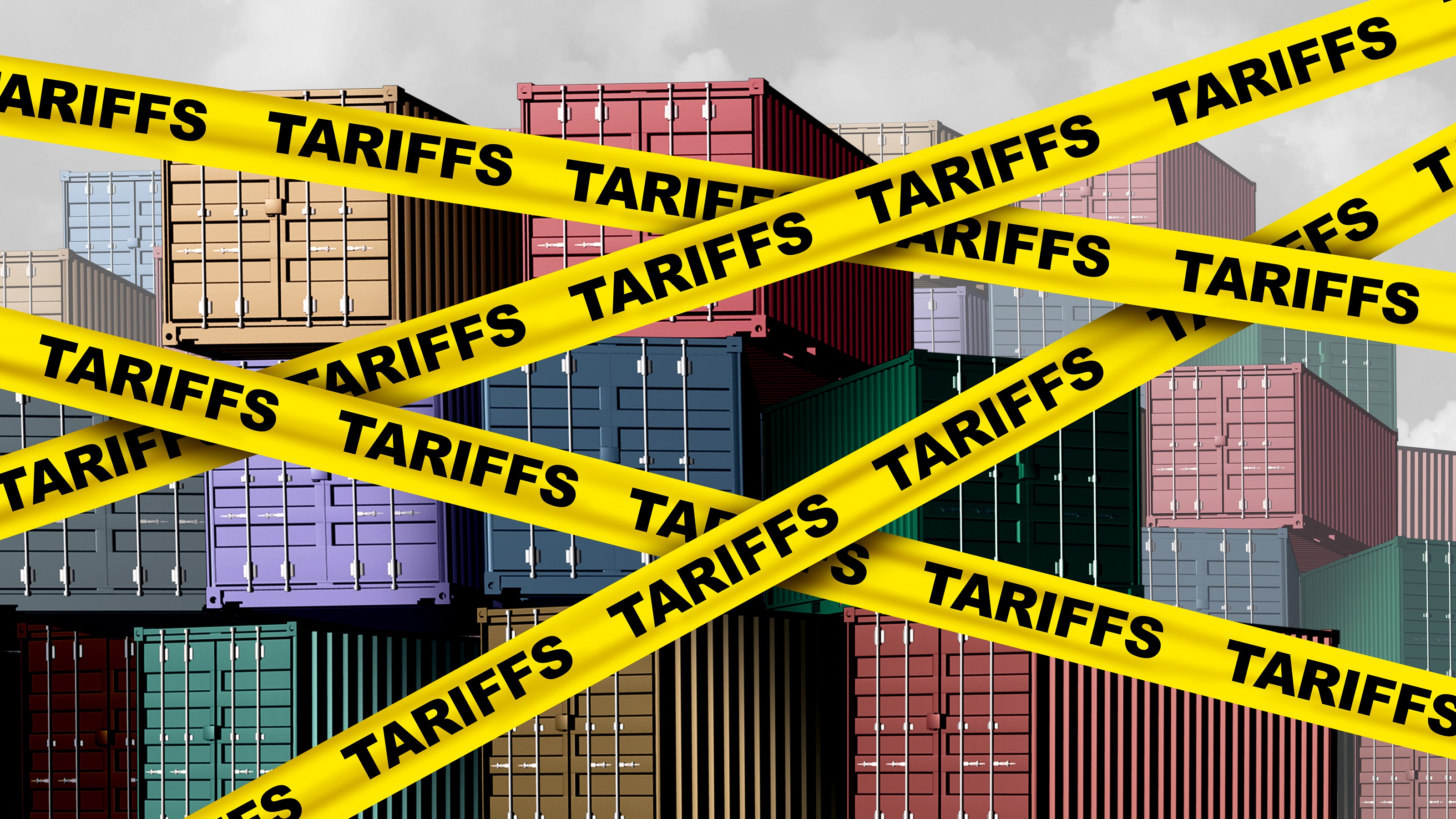FAQs on CARES Act Relief for Student Loan Borrowers
Here’s how to know if you qualify – and how you should take advantage.


Student debt has always been challenging to pay down. In fact, one in five adult borrowers who funded their own education were behind on their payments in 2018. Pair this with one of the most challenging economic environments we’ve seen in decades — soaring unemployment, limited options for career advancement and a volatile stock market — and paying off student loans feels more challenging, or even impossible for some.
In my practice, many of our clients are in fields like education that require advanced degrees and are often saddled with debt as a result. We aim to help them come up with comprehensive financial plans that help them pay down debt, while still saving and planning for the future. But in times of crisis, like this one, it’s especially important that borrowers understand their options for immediate help and relief — without losing sight of the big picture.
The Coronavirus Aid, Relief, and Economic Security (CARES) Act has offered some relief for student loan borrowers with public loans. But the nuances can be confusing, leaving many wondering how much of their debt can be relieved, and how. And many of our clients are also left with questions about what the changes mean for them and how to best proceed with finding a path to a fulfilling financial future, despite these roadblocks.

Sign up for Kiplinger’s Free E-Newsletters
Profit and prosper with the best of expert advice on investing, taxes, retirement, personal finance and more - straight to your e-mail.
Profit and prosper with the best of expert advice - straight to your e-mail.
The facts
The good news: If you have public student loans, the CARES Act provides some relief. All Federal Direct Loan borrowers are automatically enrolled into administrative forbearance and have zero percent interest from March 13 to Sept. 30, 2020. Any past due balances will be become current.
Any borrowers who were enrolled in an income-driven repayment program prior to March 13 and met other qualifications for Public Service Loan Forgiveness (PSLF) will receive credit each month as if they had made a qualifying payment towards PSLF.
The CARES Act also provides relief for all Federal Family Education (FFEL) Loans held by the federal government and Parent PLUS loans. It does not cover private student loans, FFEL loans that are held by banks or Perkins Loans.
The nuances
With a new playbook in place, my clients have been wondering how to best decide if they should take advantage of these new regulations to completely stop paying their loans for the sixth-month period, or if they should take advantage of record-low interest rates and refinance. Here are the most popular questions we’re getting from student loan borrowers now, and how we’re advising them to navigate these new changes.
If I can get temporary relief from payments – should I?
If a client was already enrolled for Public Service Loan Forgiveness under an income-driven repayment (IDR) plan prior to March 13, they will still keep accruing forgiveness for each month of the COVID-19 forbearance even though they technically aren’t making payments, that will still count as payment towards loan forgiveness.
However, if a client could qualify for PSLF, they should consider enrolling in PSLF and making their IDR payments earlier, waiving the COVID forbearance so they can start accruing qualifying payments while their PSLF application is processed.
Enrolling in PSLF takes time, and the end of forbearance is, as of now, around the corner on Oct. 1.
Anyone who still has the means to continue payments should consider continuing payments as long as they do not qualify for loan forgiveness programs — since they will pay their loans down faster, all while accruing zero percent interest on the loans. Clients should consult with their tax and legal adviser prior to acting on any payment option.
Do I still need to continue to make these payments to get credits?
Short answer: No. We always start by asking clients: Can you afford to make any payments right now? In some cases, a client or their spouse will have recently lost a job due to COVID-19, and a $100 monthly student loan payment on top of other expenses isn’t doable. In these cases, we’ll often be looking to see if PSLF is an option, and if so, to get them enrolled ASAP.
Interest rates are at record lows. Should I consider refinancing my loans to a lower interest rate?
Right now, interest rates are the lowest we may see in our lifetime. So, borrowers who don’t qualify for PSLF or other forgiveness programs — or who don’t intend to spend their careers in a nonprofit organization — would be smart to take advantage of the opportunity to refinance and capitalize on the current low interest rates.
What should I do if I don’t qualify for forgiveness, but am having trouble making my payments due to a layoff, pay cut or another COVID-19-related circumstance?
The CARES Act essentially puts student loan payments on “pause” for public borrowers — allowing them several months to get on their feet without penalizing them for missing payments. That should provide some relief to borrowers who are financially impacted by COVID-19.
However, since the CARES Act only covers those with public student loans, those with private student loans may still find themselves with questions — especially since private lenders’ relief offerings generally have not been as comprehensive. If you have private loans, your loan servicer may still offer relief or refinancing options, so it’s well worth looking into your options and considering what makes the most sense for your unique circumstance.
The road ahead
Debt is managed effectively when it is managed holistically. That’s especially important to remember during times of crisis. Whether navigating the short term or building for the long term, your student loans are a major part of your overall portfolio, just as your retirement plan and investments are.
Loan payments can have a ripple effect on your entire financial plan, impacting everything from your life insurance payments to bank balances. The key is to manage them, recognizing that there are strategies available to pay down even overwhelming amounts of student debt. By understanding the options out there to help — and how you can take advantage of them — you’ll be well-positioned to get a handle on your debt, allowing you to reach your financial goals.
Disclaimer
Randy Lupi (CA Insurance Lic. # 0M82117) offers securities through Equitable Advisors, LLC (NY, NY, member: FINRA, SIPC) (Equitable Financial Advisors in MI & TN). Investment advisory products and services offered through Equitable Advisors, LLC, an SEC-registered investment advisor. Annuity and insurance products offered through Equitable Network, LLC (Equitable Network Insurance Agency of California, LLC in CA). Equitable Advisors and its associates and affiliates do not offer student loan forgiveness, legal, tax or accounting advice or services. You should consult with professionals qualified in these areas. AGE-3145716 (7/20) (Exp. 7/22)
Get Kiplinger Today newsletter — free
Profit and prosper with the best of Kiplinger's advice on investing, taxes, retirement, personal finance and much more. Delivered daily. Enter your email in the box and click Sign Me Up.

Randal "Randy" Lupi is a regional vice president and retirement planning specialist with Equitable Advisors. He works with clients to create customized plans for retirement planning, investing and managing student debt. His dedication to clients earned him the 2019 Elite Advisor recognition from the National Tax-Deferred Savings Association (NTSA).
-
 Two Don'ts and Four Dos During Trump's Trade War
Two Don'ts and Four Dos During Trump's Trade WarThe financial rules have changed now that tariffs have disrupted the markets and created economic uncertainty. What can you do? (And what shouldn't you do?)
By Maggie Kulyk, CRPC®, CSRIC™
-
 I'm Single, With No Kids: Why Do I Need an Estate Plan?
I'm Single, With No Kids: Why Do I Need an Estate Plan?Unless you have a plan in place, guess who might be making all the decisions about your prized possessions, or even your health care: a court.
By Cynthia Pruemm, Investment Adviser Representative
-
 Two Don'ts and Four Dos During Trump's Trade War
Two Don'ts and Four Dos During Trump's Trade WarThe financial rules have changed now that tariffs have disrupted the markets and created economic uncertainty. What can you do? (And what shouldn't you do?)
By Maggie Kulyk, CRPC®, CSRIC™
-
 I'm Single, With No Kids: Why Do I Need an Estate Plan?
I'm Single, With No Kids: Why Do I Need an Estate Plan?Unless you have a plan in place, guess who might be making all the decisions about your prized possessions, or even your health care: a court.
By Cynthia Pruemm, Investment Adviser Representative
-
 Most Investors Aren't as Diversified as They Think: Are You?
Most Investors Aren't as Diversified as They Think: Are You?You could be facing a surprisingly dangerous amount of concentration risk without realizing it. Fixing that problem starts with knowing exactly what you own.
By Scott Noble, CPA/PFS
-
 Will My Children Inherit Too Much?
Will My Children Inherit Too Much?If you worry about how your children will handle an inheritance, you're not alone. Luckily, you have options — from lifetime gifting to trusts — that can help.
By Mallon FitzPatrick, CFP®, AEP®, CLU®
-
 Charitable Giving Lessons From Netflix's 'Apple Cider Vinegar'
Charitable Giving Lessons From Netflix's 'Apple Cider Vinegar'Charity fraud is rife, and a Netflix series provides a timely warning about donating money to a good cause without looking into its background.
By Peter J. Klein, CFA®, CAP®, CSRIC®, CRPS®
-
 Four Takeaways From Filing Your Taxes to Boost Your Financial Future
Four Takeaways From Filing Your Taxes to Boost Your Financial FutureNow that another tax season is in the rearview mirror for most of us, what lessons can you take from what you learned about your finances to plan for the future?
By Kate Winget
-
 What Claims Adjusters Are Thinking vs What They're Saying
What Claims Adjusters Are Thinking vs What They're SayingAfter a natural disaster, few of us are at our best, but here's what to keep in mind when you're interacting with your insurance company's claims adjuster.
By Karl Susman, CPCU, LUTCF, CIC, CSFP, CFS, CPIA, AAI-M, PLCS
-
 Looking to Make a Job Change? How to Stand Out Like a Pro
Looking to Make a Job Change? How to Stand Out Like a ProTo make a strong first impression in interviews or when networking, skip your job title and work history and use an opening gambit that highlights your talents.
By Anne deBruin Sample, CEO